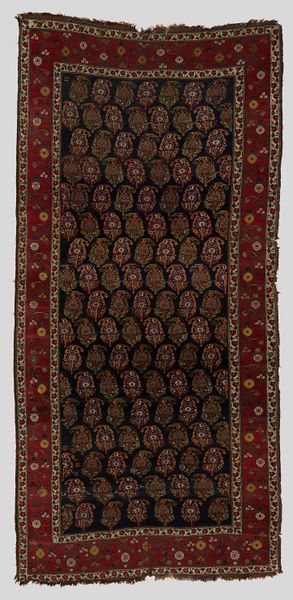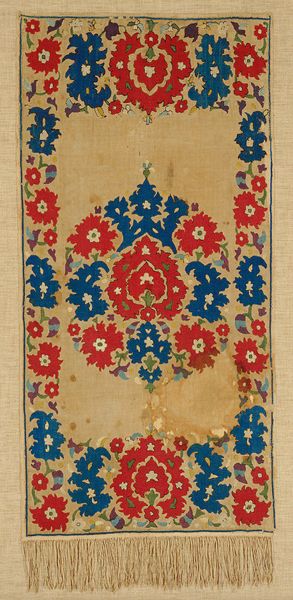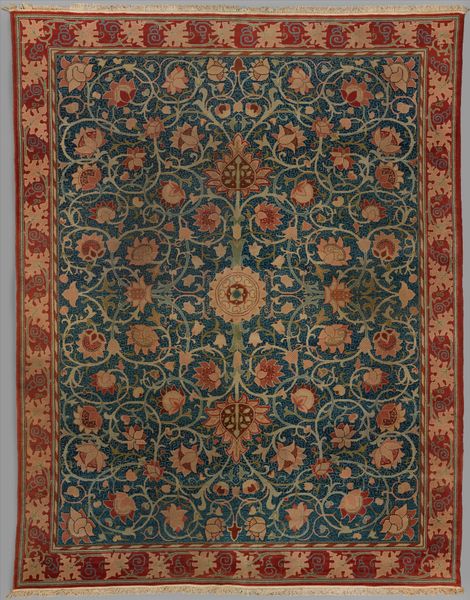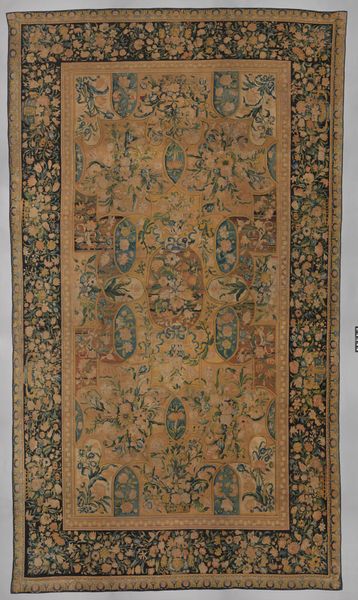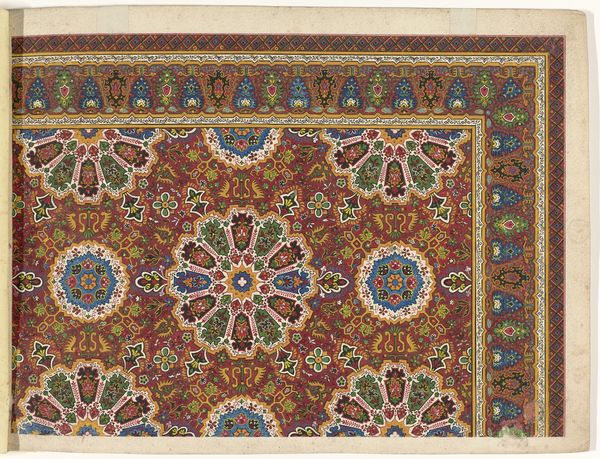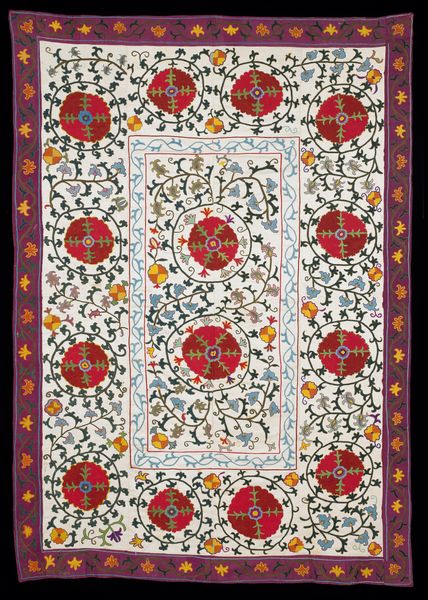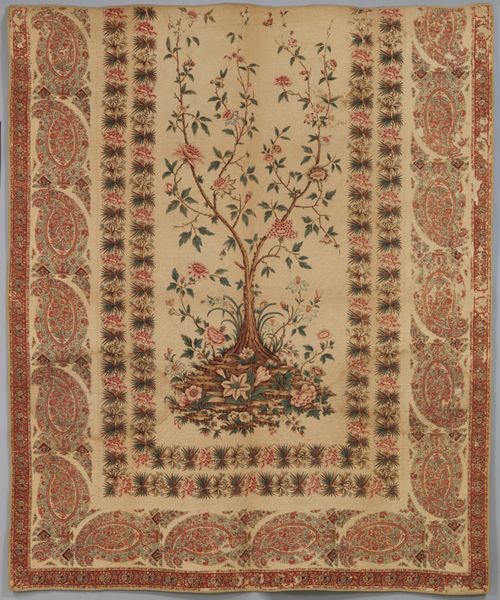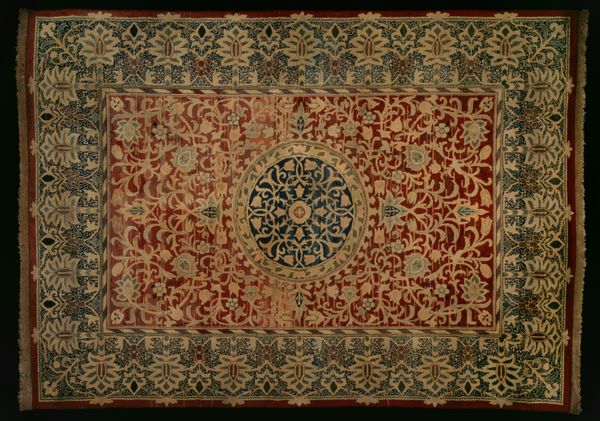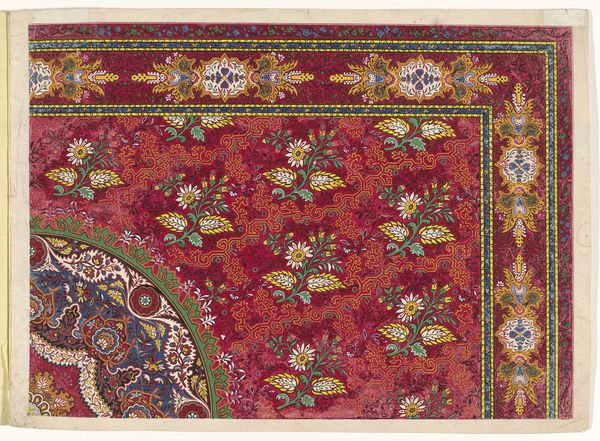
weaving, textile
#
weaving
#
textile
#
geometric pattern
#
geometric
#
islamic-art
Dimensions: 193.6 × 128.7 cm (76 1/4 × 50 5/8 in.)
Copyright: Public Domain
Curator: Here we have a “Prayer Carpet,” likely woven sometime in the 19th century. Look closely at the craftsmanship. Editor: The overall impression is striking—a deep, rich burgundy dominates, softened by the intricate floral patterns. It looks incredibly dense and time-consuming to produce. Curator: Absolutely. The social history of carpets is quite layered; they’ve been commodities, status symbols, and in this case, objects of devotion within Islamic artistic traditions. Editor: How did something so utilitarian, a carpet, come to represent spirituality? Were they commissioned by wealthy patrons as statements of piety and worldly affluence? Curator: Certainly, commissions played a role, as did the rise of museums which affected how we understand this work as an object. We need to remember that the concept of "art for art's sake" isn't universal. But focusing on the means, you’ll notice the wool likely originated from specific regional sheep. Dyeing the fibers also required complex knowledge—mastery of locally available plants, minerals, and trade routes for importing costly dyes like indigo. Editor: So, understanding its production really unlocks our comprehension. And how did the cultural context of Orientalism, popular in the West at the time, shape the way these carpets were understood and collected? Curator: The exotic appeal played a part, definitely. They were re-contextualized and displayed not necessarily for their original intended use but more as artifacts or fine art adding another layer to the politics of its imagery. Editor: Examining its production challenges conventional separations between art and craft, highlighting both the skill involved and how consumption played a role in shifting that paradigm. It underscores the vital part these artisans' contributions played. Curator: Exactly. By acknowledging all these dimensions – social, material, historical – we grasp the complexities woven into this “Prayer Carpet." Editor: I agree, seeing it beyond a pretty design encourages respect for a tradition steeped in devotion and complex social relations.
Comments
No comments
Be the first to comment and join the conversation on the ultimate creative platform.
